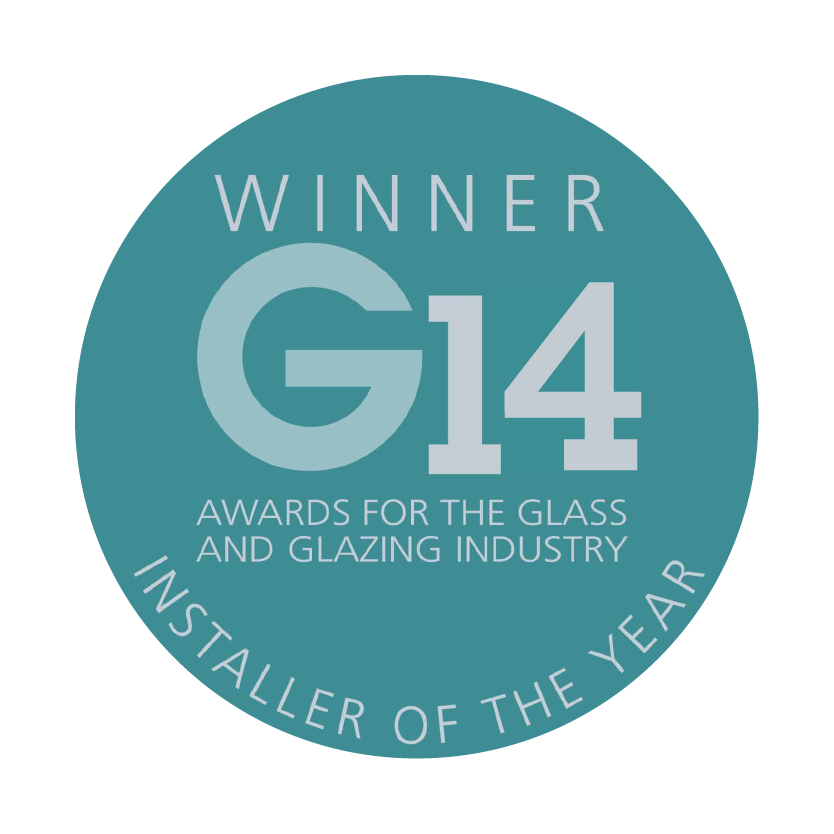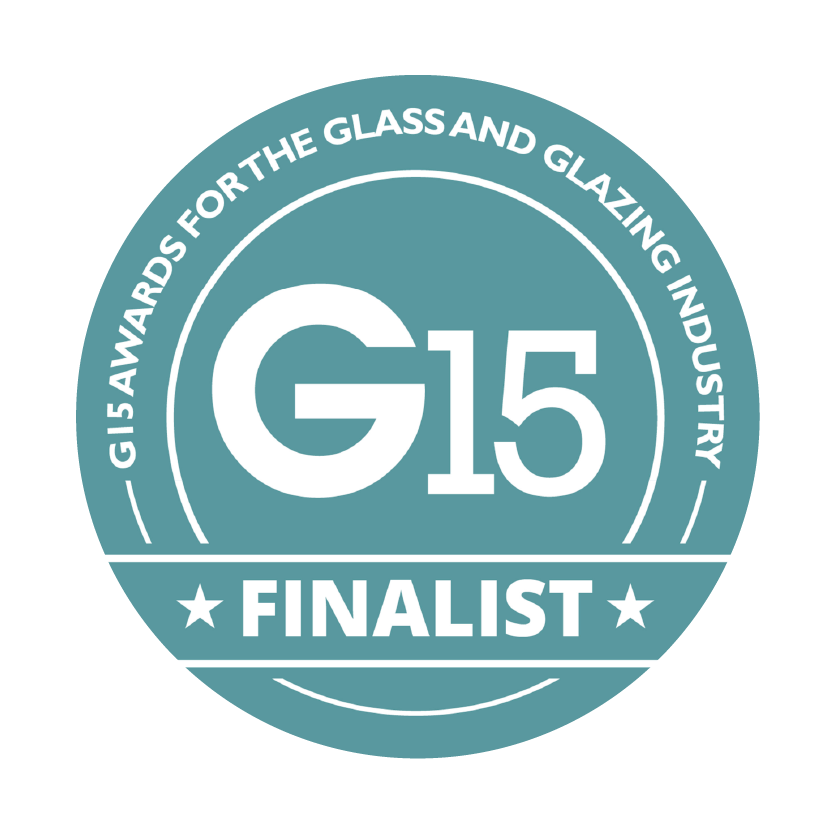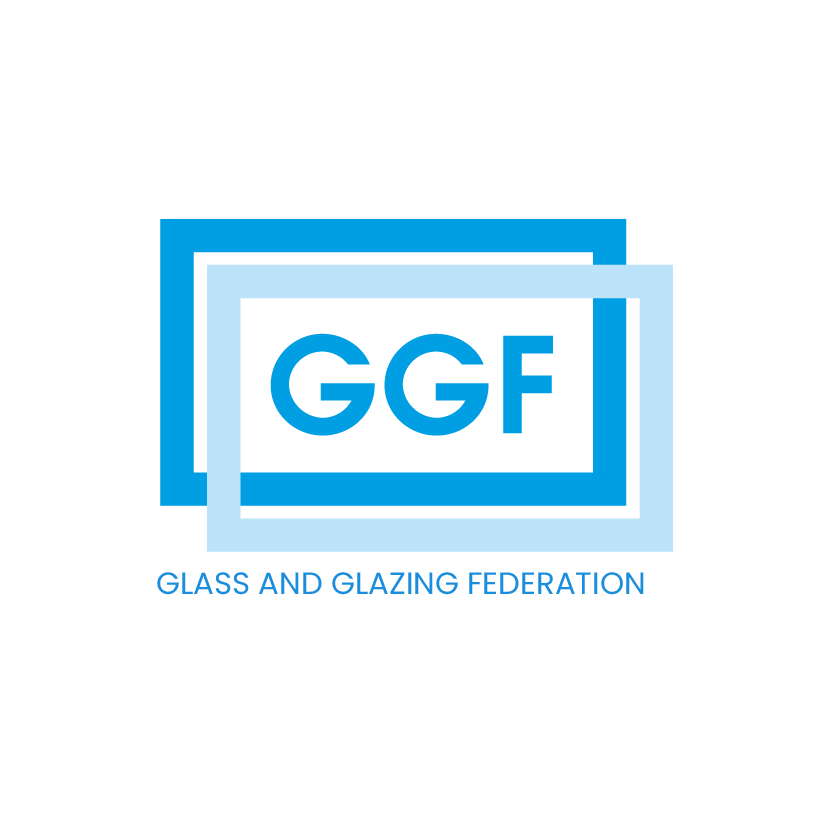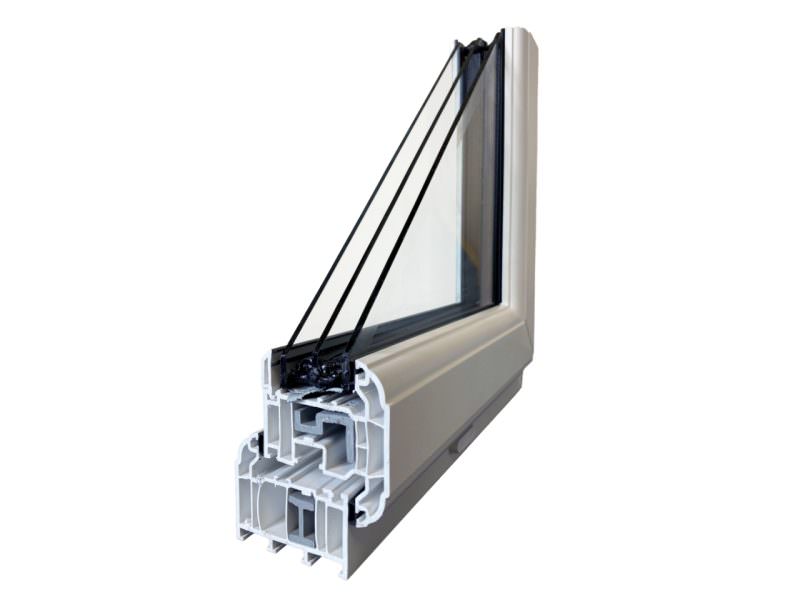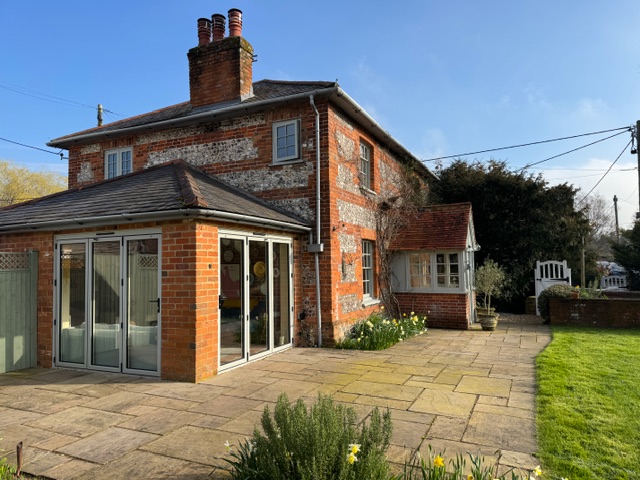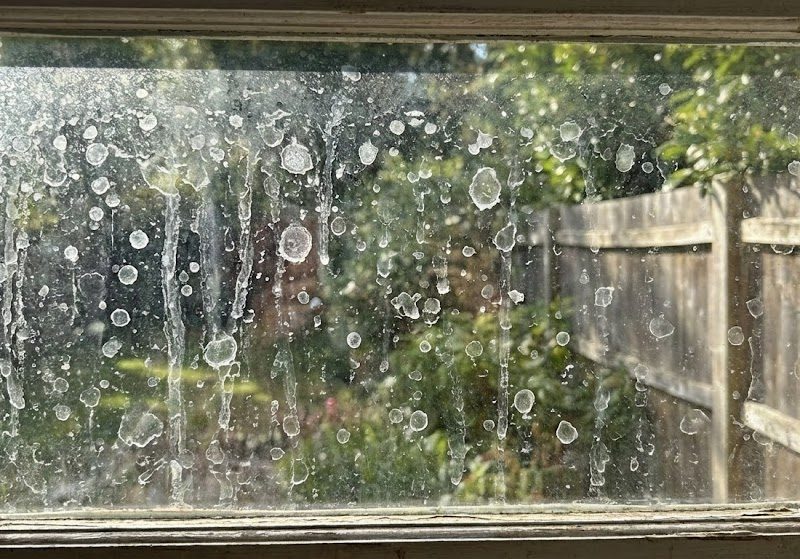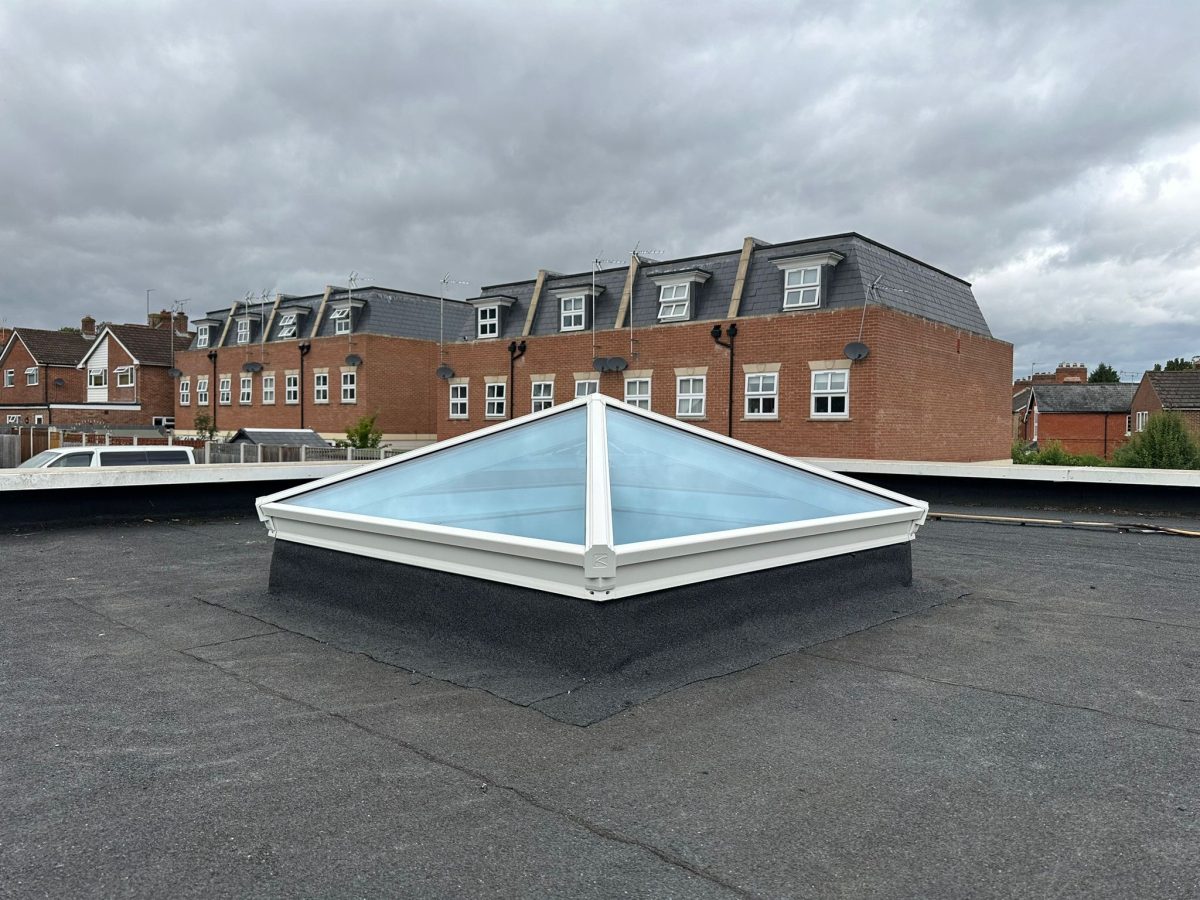
Timber - PVC - Aluminium - Windows, Doors & Conservatories in Hampshire
Beating the Heat: The Complete Guide to Solar Control Glass
Beating the Heat: The Complete Guide to Solar Control Glass
Category: Glazing Guide / Home Comfort
Reading Time: 9 Minutes
📌 Key Takeaways
- The “Greenhouse Effect”: Standard glass traps solar heat inside, causing conservatories to overheat rapidly in summer.
- The Technology: Pilkington solar control glass uses a microscopic coating to reflect up to 75% of heat back outside.
- The Metrics: We measure performance using “g-values” (solar gain). A lower number means better cooling.
- The Benefits: Reduces glare for screens, blocks 98% of furniture-fading UV rays, and maintains a comfortable temperature.
We all love a bright, sunny room—until it becomes a greenhouse. If you have a conservatory or a large south-facing window, you know the struggle: it is freezing cold in winter and unbearably hot from May to September.
Historically, the only solutions were expensive air conditioning or dark, unsightly tinted films that ruined your view. Fortunately, glass technology has evolved.
In this comprehensive guide, KJM Group explains the science behind Solar Control Glass and details the specific Pilkington products available to transform your home into a comfortable year-round space.
Table of Contents
1. What is Solar Control Glass? (The Physics)
Solar control glass is a high-performance glazing product designed to reflect infrared heat while allowing natural light to pass through. Unlike older tinted glass that simply absorbs heat, modern solar control glass uses Selective Filtering technology to bounce solar radiation away from the building.
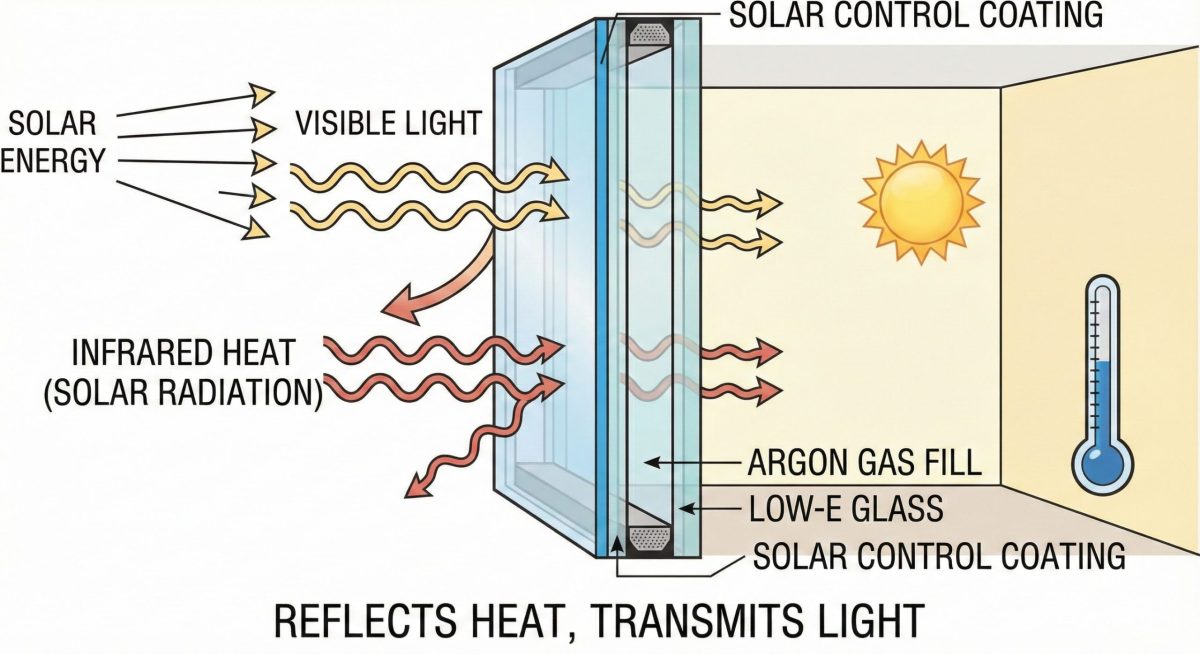
This performance is achieved through a microscopic metallic coating applied to the glass during manufacture. This coating is “spectrally selective.” It allows Short-Wave Radiation (visible light) to pass through but reflects Long-Wave Radiation (infrared heat) back into the atmosphere.
2. The Data: g-Values Explained
To choose the right glass, you need to understand the “g-value” (Solar Factor). This measures how much solar heat enters a room through the glass.
- g-value of 1.0 (100%): All heat enters the room (an open hole).
- g-value of 0.0 (0%): No heat enters the room (a brick wall).
Standard Glass: Has a high g-value (~0.76), meaning 76% of the sun’s heat gets in.
Solar Control Glass: Has a low g-value (e.g., 0.33), meaning only 33% of the heat gets in.
3. Comparison: Standard vs. Solar Control
Here is the quantitative data comparing standard double glazing against Pilkington’s high-performance options.
| Glass Type | g-value (Heat In) | Light Transmission | Heat Rejection |
|---|---|---|---|
| Standard Clear Double Glazing | 0.76 (High) | 82% | Low (24%) |
| Pilkington Activ™ Blue | 0.33 (Low) | 52% | High (67%) |
| Pilkington Suncool™ 70/35 | 0.37 (Very Low) | 70% | High (63%) |
4. The Pilkington Product Range: Choosing Your Glass
At KJM Group, we partner with Pilkington, the world leader in glass technology. Understanding the difference between their products is key to getting the right result for your specific room.
Pilkington Product Spotlight
The Look
Attractive Blue Tint
Performance
Blocks 67% of Heat. Allows 52% of Light.
Best For
Conservatory Roofs. The tint provides excellent glare reduction for bright days.
The Look
Subtle Grey / Neutral
Performance
Blocks 60% of Heat. Allows 59% of Light.
Best For
Homeowners who dislike blue roofs but still need high heat rejection.
The Look
Virtually Clear
Performance
Blocks 65% of Heat. Allows 70% of Light.
Best For
Vertical Windows & Bi-folds. High light transmission with elite heat blocking.
5. Pros & Cons (Trade-offs)
Before investing, it is important to weigh the benefits against the potential limitations.
✅ The Benefits
Comfort
Makes the room usable in peak summer without expensive A/C.
Protection
Blocks 98% of UV rays, saving your furniture from fading.
❌ The Downsides
Light Loss
Reduces light transmission by 15-40% compared to clear glass.
Cost
Is a premium product, costing more than standard glazing.
6. Local Advice: Hampshire Conservatories
🏡 Designing for UK South-Facing Gardens
In Hampshire and Southern England, south-facing conservatories can reach temperatures of over 40°C in summer. For these projects, we strongly recommend combining:
- Low g-value glass (like Activ™ Blue) for the roof.
- Adequate Ventilation (roof vents or trickle vents) to allow heat to escape.
- Solar Control vertical glazing (like Suncool™) if you have large bi-fold doors.
This “fabric first” approach prevents the heat from entering in the first place, rather than trying to cool it down later.
7. Frequently Asked Questions
It depends on the product. Pilkington Activ™ Blue has a noticeable tint, which is desirable for roofs to reduce glare. Pilkington Suncool™, however, is designed for vertical windows and doors; it is virtually clear and indistinguishable from standard glass to the naked eye.
It is essential for conservatory and orangery roofs, which are the primary cause of overheating. It is also highly recommended for large glazed areas like bi-fold or sliding patio doors, especially if they face south or south-west.
Yes. You don’t need to replace your entire window frames. We can simply replace the existing sealed double-glazed units with new, high-performance solar control units (like Activ™ Blue), instantly upgrading the comfort of the room. Contact us for a quote.
📚 Explore Our Glass Knowledge Hub
Compare other modern glazing technologies.
- The 2026 Glazing Outlook” – High-level summary of the pivot to growth. - 9 December 2025
- Industry News: The Future Homes Standard 2025 & What It Means for Your Windows - 1 December 2025
- KJM Group MD Attends House of Commons Event to Champion UK Glass Industry - 14 November 2025




